
Post-Impressionism is a joyful and unconventional style in painting
Post-Impressionism is a collective term for numerous disparate trends in painting from the late 19th to the early 20th century. During that period, new artistic schools were forming, which had a strong influence on each other. Post-Impressionism hastened the completion of the transitional period from traditional academic art to the painting styles of the 20th century.
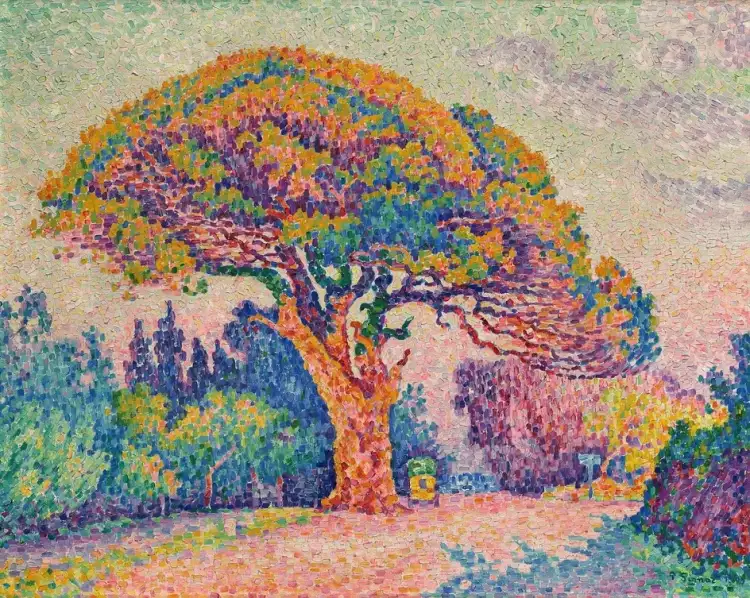 Post-Impressionism. Paul Signac. The Pine Tree at Saint Tropez, 1909
Post-Impressionism. Paul Signac. The Pine Tree at Saint Tropez, 1909
The history of development and main directions of Post-Impressionism
Post-Impressionism emerged in France in the mid-1880s as a result of the crisis of Impressionism and the efforts of master artists to find visual means that corresponded to the new era. Post-Impressionists rejected the depiction of fleeting impressions of reality on canvas and aimed to reveal the essence of objects and capture the prolonged state of the surrounding world.
Post-Impressionism and Impressionism, despite the somewhat absurd sound of this expression, coexisted for a long time. Innovative artists did not have a unified program, methods, and expressive means to overcome established dogmas in painting. Many Post-Impressionists initially leaned towards Impressionism but gradually abandoned its aesthetics in favor of decorative stylization in their works.
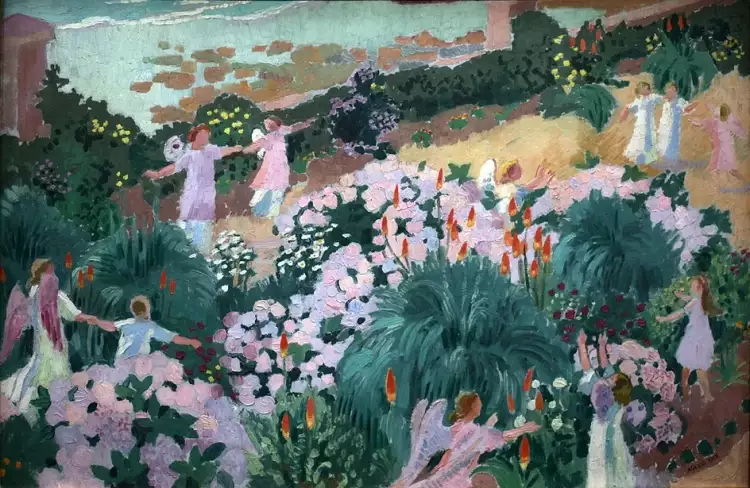 Post-Impressionism. Maurice Denis. Paradise, 1912
Post-Impressionism. Maurice Denis. Paradise, 1912
The general public's first encounter with the paintings of Post-Impressionists took place in Paris in 1886. Ironically, this happened at the last, 8th Impressionist exhibition. The catalog of this exhibition featured works by two young artists, Paul Signac and Georges Seurat, who were participants of the Neo-Impressionist movement. The works of these Neo-Impressionist participants differed from the other paintings in terms of technique and composition. Subsequently, the new style was named Pointillism or Divisionism.
Post-Impressionism is characterized by the simultaneous development of a large number of diverse new directions. In addition to Neo-Impressionism, other movements also made their mark on the history of art:
- Intimism.
- Cloisonnism.
- Synthetism.
- Primitivism.
Under the influence of Paul Gauguin in northern France, in the historical region of Brittany, artists of the Pont-Aven School worked: Émile Bernard, Paul Sérusier, and Charles Laval.
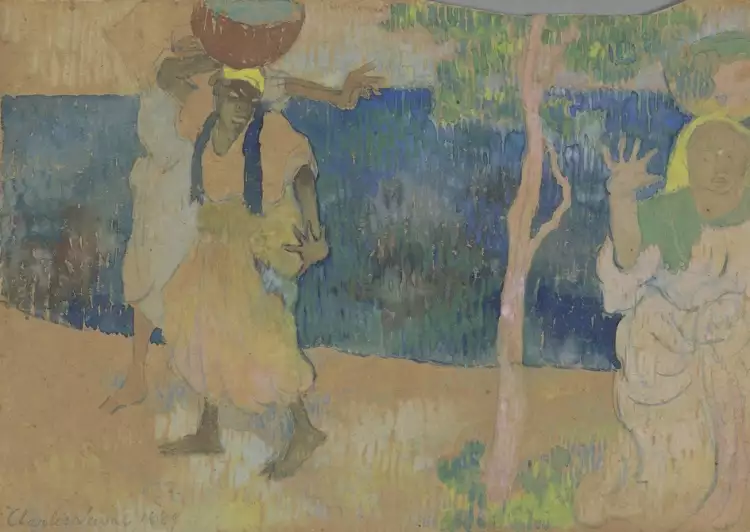 Post-Impressionism. Charles Laval. Women by the sea, 1887
Post-Impressionism. Charles Laval. Women by the sea, 1887
In 1890, the artistic group Nabis was founded in Paris. Its members included Pierre Bonnard, Édouard Vuillard, Maurice Denis, and Félix Vallotton. The group existed until 1905, and its participants recognized one of the main goals of their creative work as the destruction of differences between classical easel painting and applied decorative art. The artists not only painted pictures but also created frescoes, tapestries, wallpapers, stage designs for theaters, and designs for advertising posters.
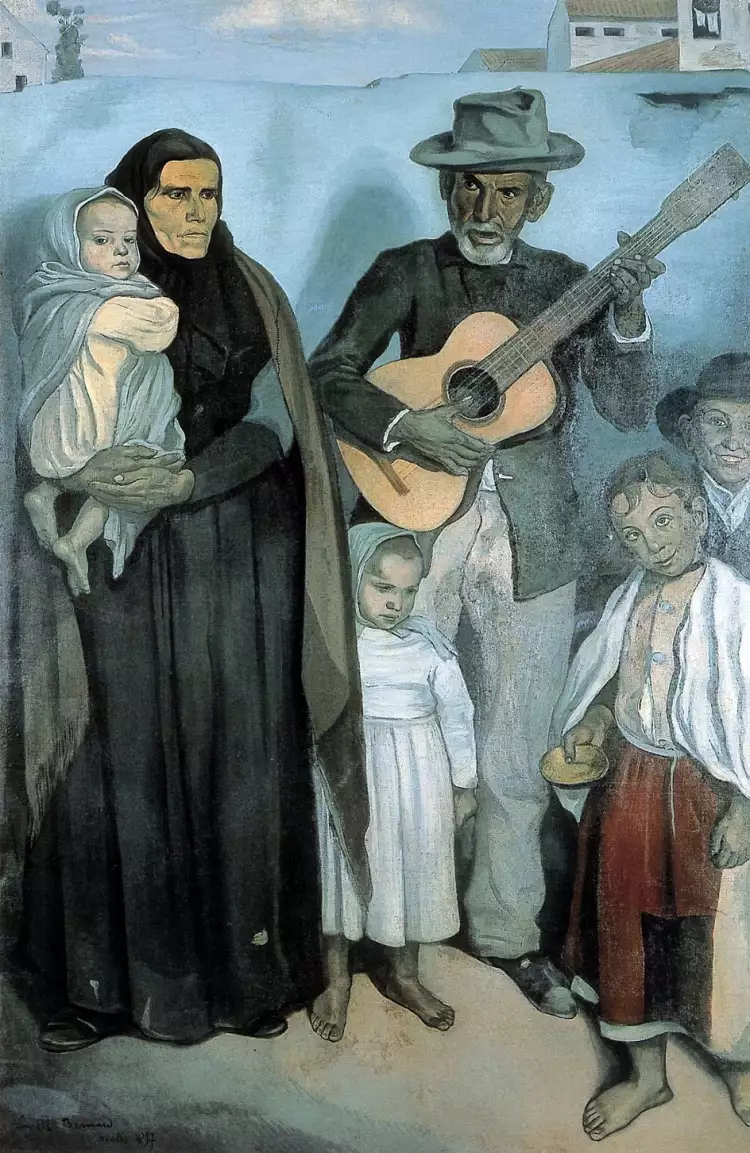 Post-Impressionism. Émile Bernard. Spanish emigrants
Post-Impressionism. Émile Bernard. Spanish emigrants
Separate communities of Post-Impressionist artists at the turn of the 19th and 20th centuries were formed in other parts of the world: in England (Camden Town Group), Canada (Group of Seven), Scandinavian countries (where Norwegian visual art masters like Edvard Munch, Peder Krøyer, and Danish artist Vilhelm Hammershøi worked).
Distinctive features of Post-Impressionism
Post-Impressionism served as a significant catalyst for the development of new directions in painting: symbolism, cubism, modernism, and expressionism, with which it shares much. However, it also has unique distinguishing features:
- Focus on the true essence of material things and phenomena.
- Appeal to emotions to establish a deep connection with viewers.
- The need to convey a prolonged, not momentary, state of the real and sensory world.
- Emphasis on the symbolic content of the artwork.
- Brightness of the color palette.
- Dominance of the flat surface, a deliberate rejection of three-dimensional representation of forms.
Famous Post-Impressionist artists - Van Gogh, Cézanne, Gauguin, and others
The names of great Impressionist masters are well known even to people far from the world of art. Many artists deserve mention in our article, but we will limit ourselves to just a few:
- Paul Cézanne - a contemporary of many outstanding Impressionists, one of the most influential artists in contemporary painting. He used the method of contrast to create color with strong form. He believed that artists should not imitate nature but express themselves in their works. Cézanne was the creator of a radically new way of interpreting conventional linear perspective.
- Paul Gauguin - a painter, sculptor, and graphic artist obsessed with the desire to merge with nature and considered civilization a "terrible disease." He spent a significant part of his life in the Pacific Islands. In his works, he depicted dreams rather than reality and did not share the Impressionists' enthusiasm for naturalism. He boldly distorted the original colors in his works to achieve maximum emotional expressiveness.
- Vincent van Gogh - an extraordinary figure with a complex fate. He was recognized as a genius only after his death. Throughout his life, he experimented extensively and rejected the academic view of painting. He created a unique recognizable style with saturated colors, bold brushstrokes, elements of decoration, and symbolism. He had a decisive influence on the development of a new art style - expressionism.
- Georges Seurat - the creator of Pointillism, a unique technique in visual art. He replaced arbitrary brushstrokes in his paintings with meticulously arranged dots. He skillfully chose contrasting colors to capture a frozen moment on the canvas. His paintings are filled with stylized figures of simplified forms in astonishing chromatic harmony.
- Henri Rousseau - a self-taught artist and a prominent representative of primitivism, the author of numerous exotic landscapes, including those depicting jungles. Rousseau's work is characterized by well-defined forms, color saturation, and meticulously detailed details. The famous cubist Pablo Picasso admired the artist's work.
- Henri Toulouse-Lautrec - born into a noble aristocratic family, he suffered a severe injury in childhood and became disabled. He skillfully depicted the life of the artistic bohemia, making a significant contribution to the art of poster design. He created works on social themes in a playful and light-hearted manner. He led a scandalous life and abused alcohol, showing contempt for bourgeois society.
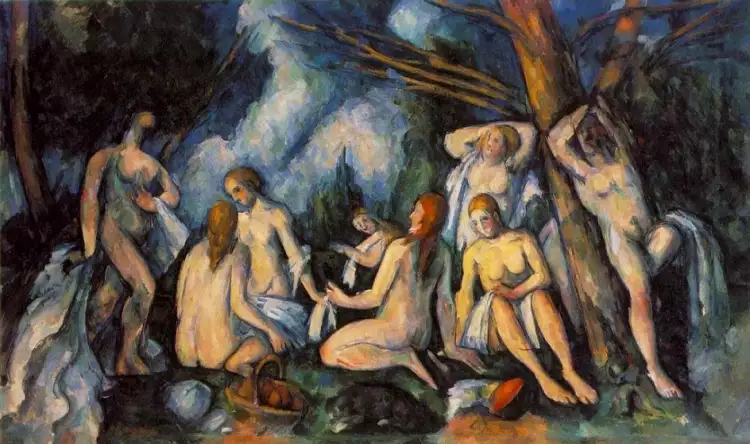 Post-Impressionism. Paul Cézanne. Big bathers, 1900-1905
Post-Impressionism. Paul Cézanne. Big bathers, 1900-1905
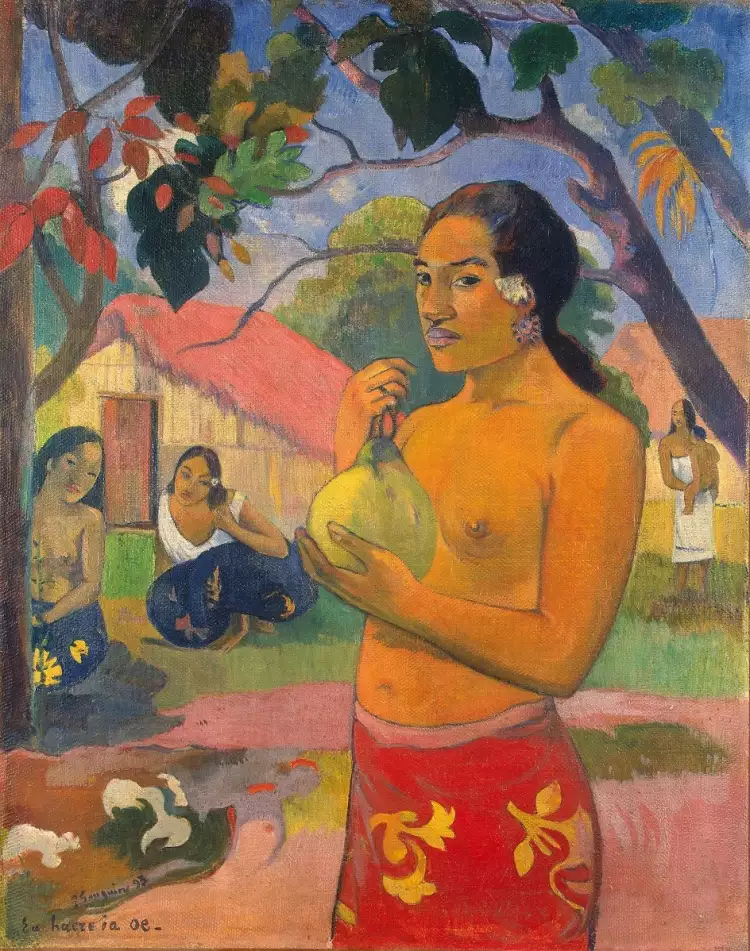 Post-Impressionism. Paul Gauguin. Eu haere ia oe (Where are you going?), 1892
Post-Impressionism. Paul Gauguin. Eu haere ia oe (Where are you going?), 1892
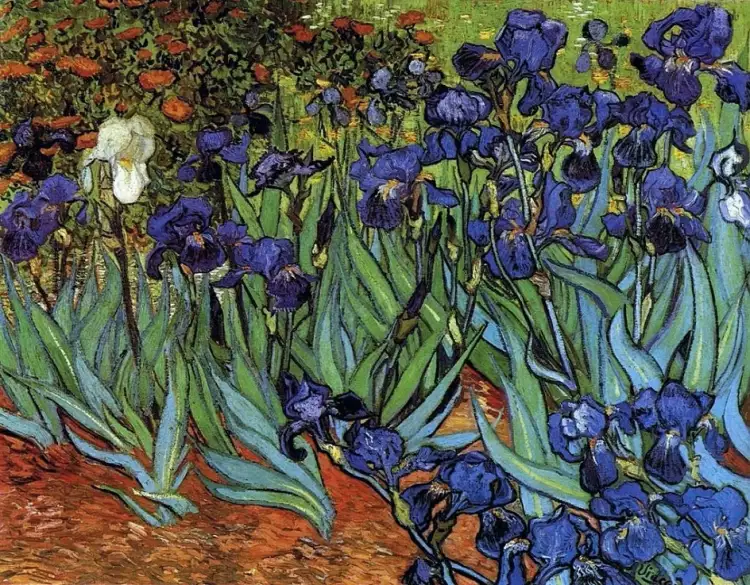 Post-Impressionism. Vincent van Gogh. Irises, 1889
Post-Impressionism. Vincent van Gogh. Irises, 1889
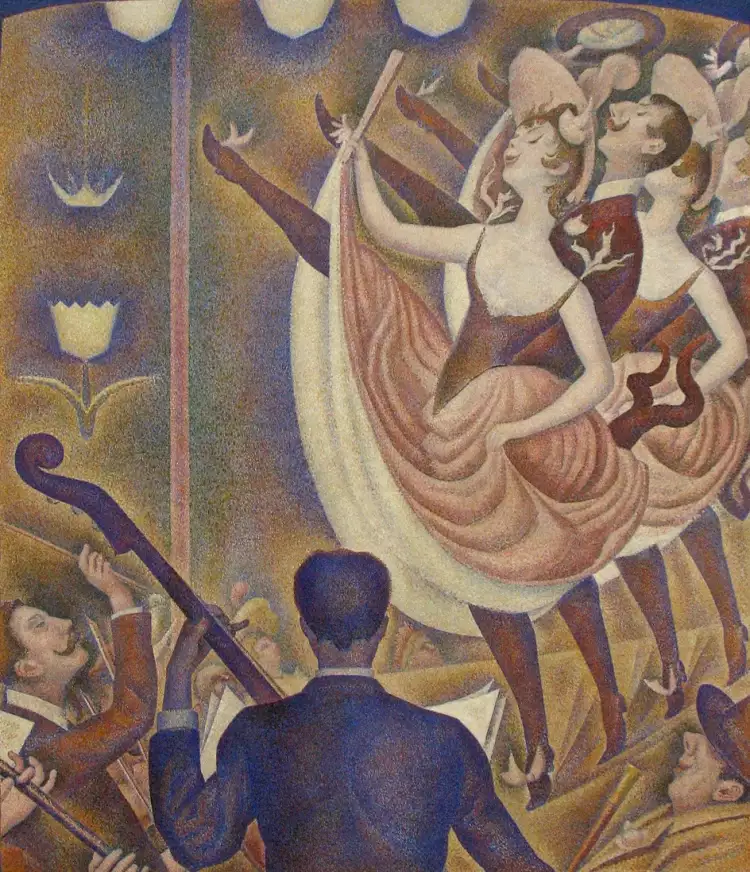 Post-Impressionism. Georges Seurat. Le Chahut, 1889
Post-Impressionism. Georges Seurat. Le Chahut, 1889
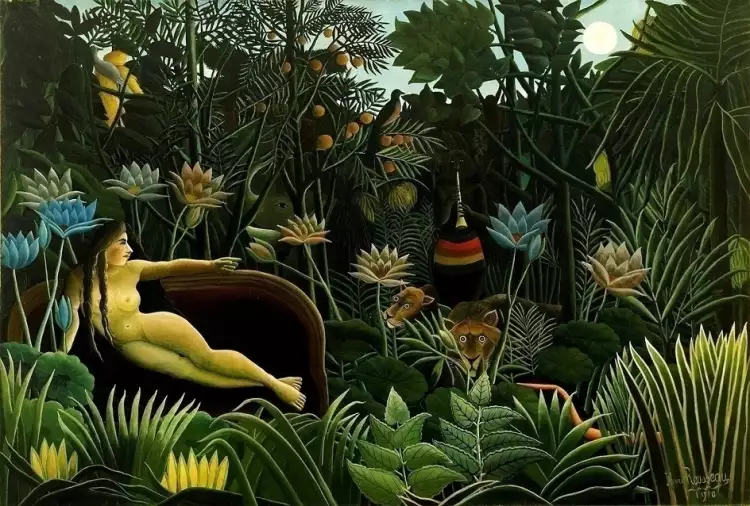 Post-Impressionism. Henri Rousseau. The Dream, 1910
Post-Impressionism. Henri Rousseau. The Dream, 1910
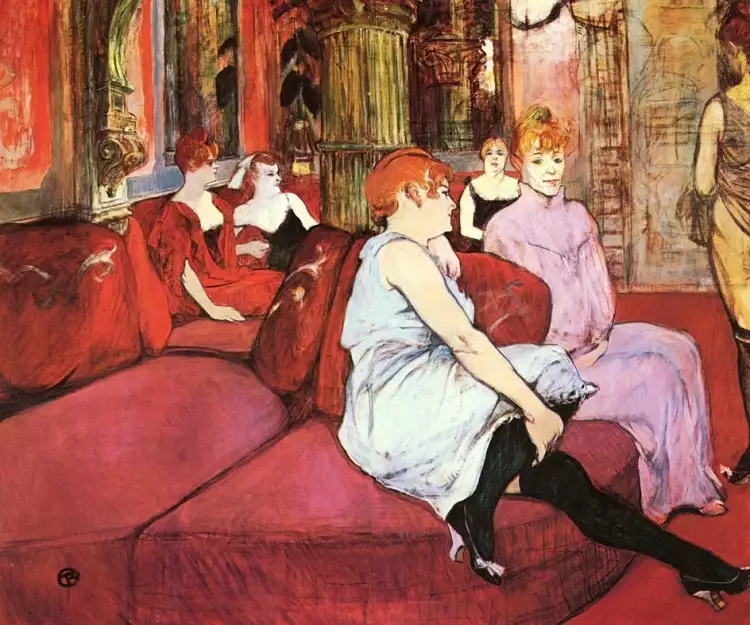 Post-Impressionism. Henri de Toulouse-Lautrec. Salon Rue des moulins, 1894
Post-Impressionism. Henri de Toulouse-Lautrec. Salon Rue des moulins, 1894
Most Post-Impressionist paintings were not appreciated by their contemporaries. Many artists only gained worldwide recognition after their death. But today, their works are incredibly popular and adorn the collections of leading museums around the world.
You can find vibrant works by recognized masters in the catalogs of the Very Important Lot portal. Participate in online auctions to get a unique opportunity to become a rightful owner of a worthy painting.
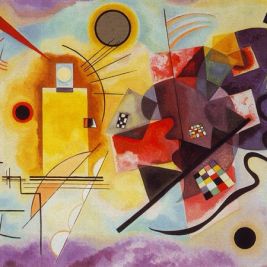 Avant-garde - the vanguard of the bold and resolute. Avant-garde styles in painting
Avant-garde - the vanguard of the bold and resolute. Avant-garde styles in painting  The Rising Trend of Collecting Regional Books in the Antiques Market
The Rising Trend of Collecting Regional Books in the Antiques Market  Mannerism style in interior design - the aesthetics of grandeur and the logic of mannerism
Mannerism style in interior design - the aesthetics of grandeur and the logic of mannerism 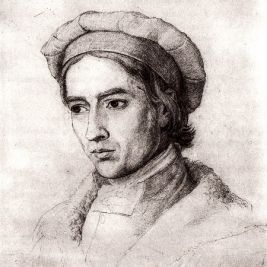 Nazarenes - romantic artists who challenged the conventions of classicism
Nazarenes - romantic artists who challenged the conventions of classicism 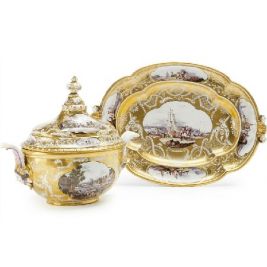 German Porcelain: History of Creation and Development
German Porcelain: History of Creation and Development 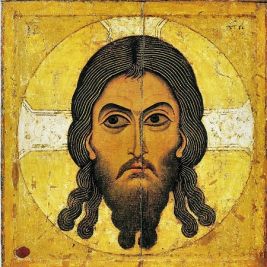 The Art of Ancient Russia is a unique blend of pagan traditions of Eastern Slavs and Byzantine influence on the local culture
The Art of Ancient Russia is a unique blend of pagan traditions of Eastern Slavs and Byzantine influence on the local culture  Fashion Photography - the Dazzling World of Fashion, Models, and Glossy Magazines
Fashion Photography - the Dazzling World of Fashion, Models, and Glossy Magazines  Orders of Germany - awards of former feudal states
Orders of Germany - awards of former feudal states 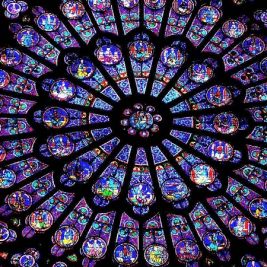 Stained glass is a grand masterpiece of monumental art made from small pieces of colored glass
Stained glass is a grand masterpiece of monumental art made from small pieces of colored glass 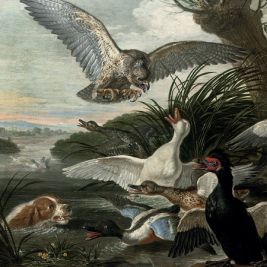 Animalism is a popular genre in painting from prehistoric times
Animalism is a popular genre in painting from prehistoric times